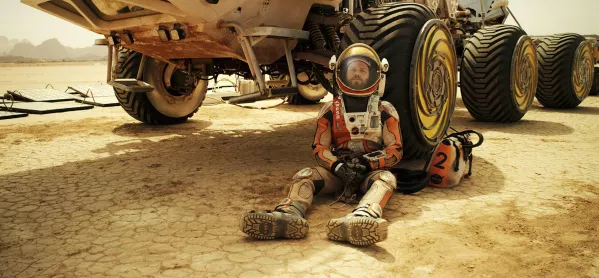The world of cinema has an underrated ability to help reach pupils who might be struggling with most aspects of school. Let me explain.
A series of new essays in the Film Education Journal, exploring projects in places from inner-city Glasgow to rural Chile, has suggested that working with film may provide valuable new ways of reaching vulnerable and hard-to-reach learners.
Writing about their work at John Paul Academy in Glasgow, teachers Michael Daly and Jacqueline Thomson have recently been exploring ways in which film could be placed at the heart of an alternative curriculum for some of their most vulnerable learners. Daly and Thomson describe how the relevance and power that film already holds for young learners can unite diverse aspects of the curriculum, showing how a film such as The Martian can help to energise and link a series of diverse tasks that students might otherwise struggle to engage with.
Related: Film should play a bigger part in pupils’ education
Interview: Mark Cousins on why cinema should feature in lessons more often
Film education: When a Hollywood star came to school
Movie time: 5 films teachers should show at the end of term
Scare tactics: Horror films gaining popularity in English courses
Elsewhere, Felipe Correa has written of the place of film education within programmes in Chile, which seek to reintegrate young people with learning disabilities back into school education. Correa discusses how encounters with cinema, and the different ways of seeing our surroundings that arise from an understanding of cinema (and, crucially, from the opportunity to experiment with a camera), can lead to a greater awareness of and engagement with the world around us.
Film education: Engaging vulnerable students
Describing his work with Cinema en Curso (a project initially developed in Barcelona), Correa shows how he encourages his film students - through the making of a short documentary - to build relationships with traditional craftsmen and artisans, who are then able to model to students patient approaches to creative craftsmanship motivated by the pride one is ultimately able to take in one’s work.
Also in Chile, Alicia Vega writes about her experiences running film workshops for some of the most marginalised communities in Chile for nearly 30 years. For Vega, the shared experience of cinema can be a highly positive focus for even the most vulnerable of children. In her account of experiences delivering workshops in both rural and urban settings, Vega highlights the ways in which film education frequently leads to parallel steps forward that young learners are able to make in their sense of self-confidence and self-efficacy.
I have witnessed similarly remarkable moments in my own work as a film education practitioner in Scottish classrooms, where engagements with film have led to significant leaps forward in children’s development. In my work with Scotland’s Understanding Cinema project, for example, a Primary 7 student who made a strong engagement with practical filmmaking work - directing and starring in his own film - simultaneously made big progress elsewhere in his studies, to the extent that his teacher later told me his reading age had leapt forward three years in only three months.
As all of the above show, we are only just beginning to realise the full power of film education for vulnerable learners.
Jamie Chambers is the founding editor of the Film Education Journal (@filmeducationj on Twitter) and organised the Scottish International Film Education Conference 2020
